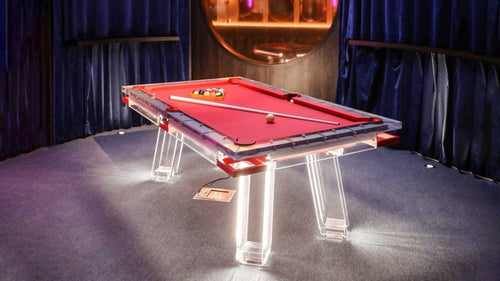Enjoy our modern designs
Estimated Read Time: 5 mins | Updated:
In the refined, competitive world of billiards, a few striking figures have transcended the boundaries of the sport, carving out legacies that defy expectations and redefine norms. Among these trailblazers, Masako Katsura stands out not just as a skilled player but as a pioneering woman who challenged and changed the male-dominated landscape of billiards.

The First Lady of Billiards
Masako Katsura 桂 マサ子, known as "Katsy" among billiards enthusiasts, was born on March 7, 1913, in Tokyo. After her father's passing, she moved in with her sister and brother-in-law Tomio Kobashi, who owned a billiards hall. Katsura was drawn to the game early, fascinated by its strategic complexity.

At 13, she began working at the hall. Noticing her natural skill, Kobashi mentored her. The family even installed a home table to support her interest. By 15, she had already won the women's straight rail championship in Japan and turned professional, touring across Asia and competing against male players.

A Trailblazer on the World Stage
After marrying American serviceman Vernon Greenleaf in 1950, Katsura moved to the U.S., bringing with her an already-impressive record. She had scored 10,000 points in a single straight rail exhibition—proof of her control and stamina.

Her talent earned her a spot in the 1952 World Three-Cushion Billiards Championship. Eight-time world champ Welker Cochran, impressed by a private exhibition, extended an official invitation.
Katsura's Historic 1952 World Championship Run
Masako became the first woman to compete for a world billiards title. Held in San Francisco, the tournament featured legends like Willie Hoppe and Kinrey Matsuyama.

Though she lost her first match to Irving Crane 50–42, she rebounded with wins over Herb Hardt and Joe Procita, and even defeated Ray Kilgore. Her match against Hoppe drew over 500 spectators. She ultimately placed 7th—an incredible feat that shifted global perceptions.


Exhibition Tours
Following the 1952 championship, Katsura toured with Welker Cochran, performing exhibitions in San Jose, Kansas City, Chicago, and beyond. Each event featured tournament-style matches and trick shots, captivating audiences nationwide.

She used her platform to advocate for women in billiards, insisting the sport wasn’t just for men. Her exhibitions weren’t just performances—they were statements.
Impact and Legacy
Described by Danny McGoorty as "the greatest thing that ever happened in billiards," Masako Katsura remains a cultural icon. Her ability to compete at the highest level changed the game forever, proving skill knows no gender.

Katsura inspired generations, broke barriers, and redefined what's possible—not just in billiards, but in sports as a whole. Her story is one of brilliance, bravery, and lasting influence.

















